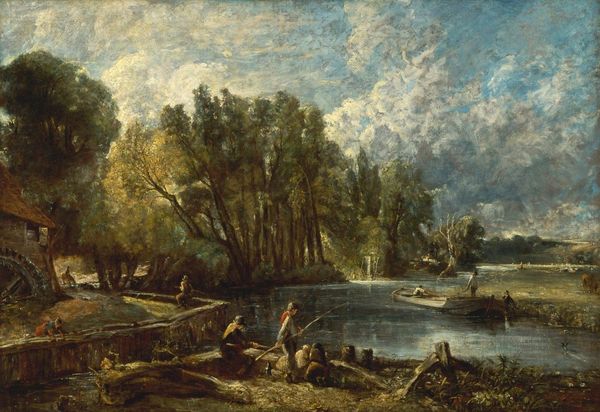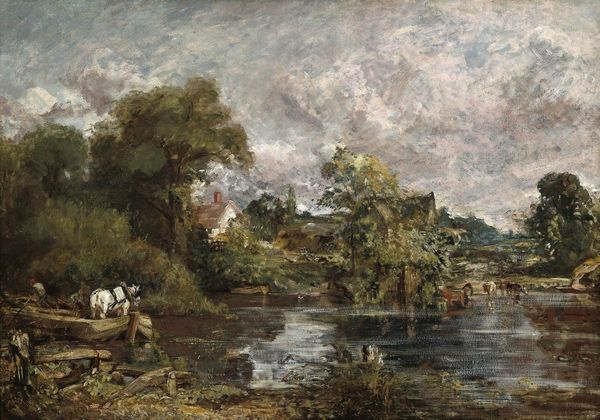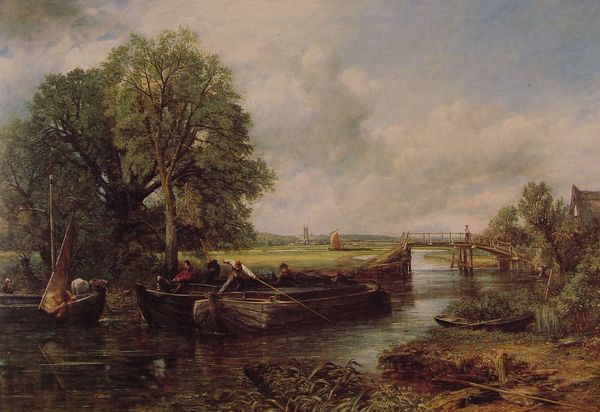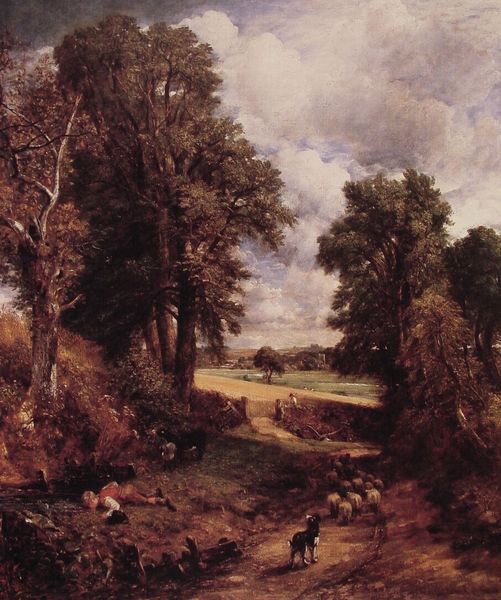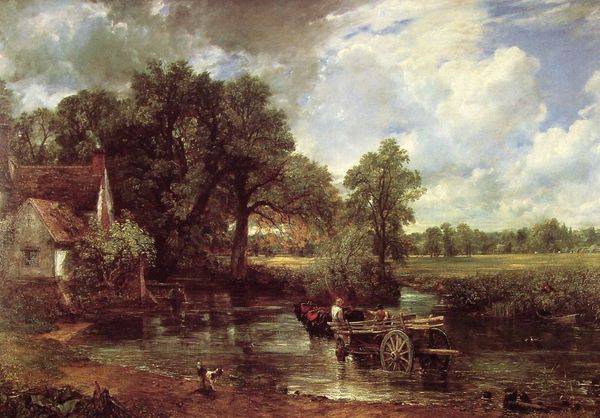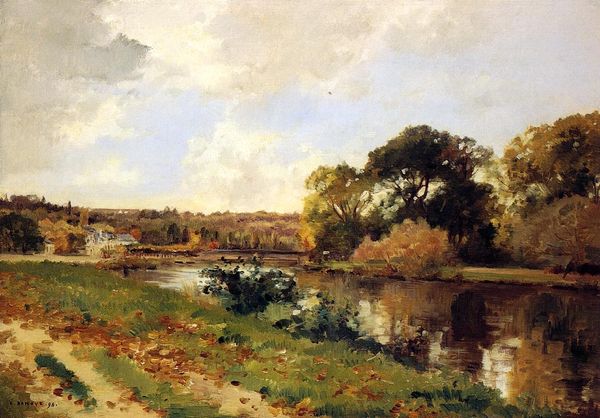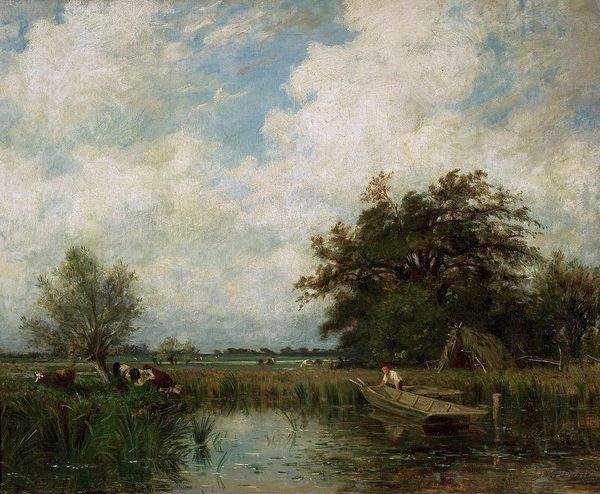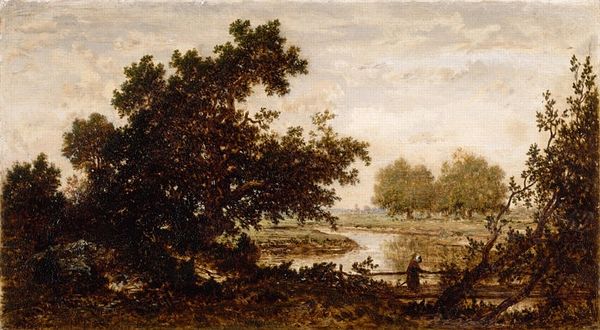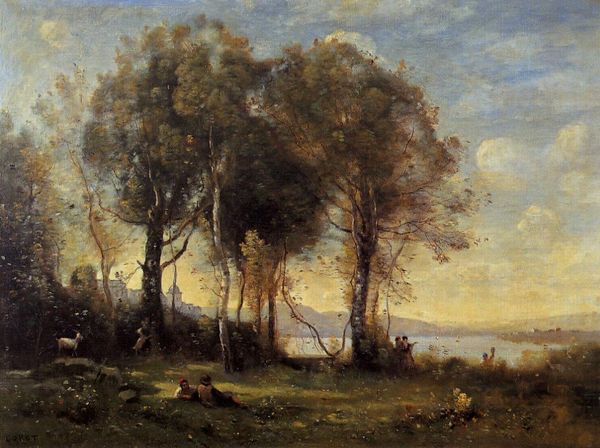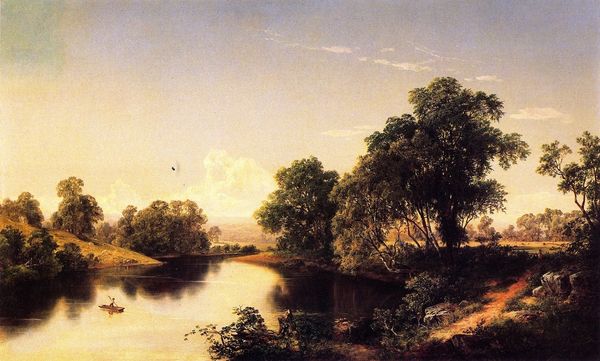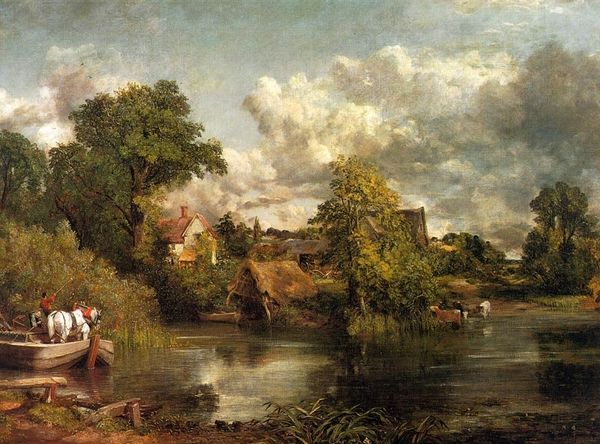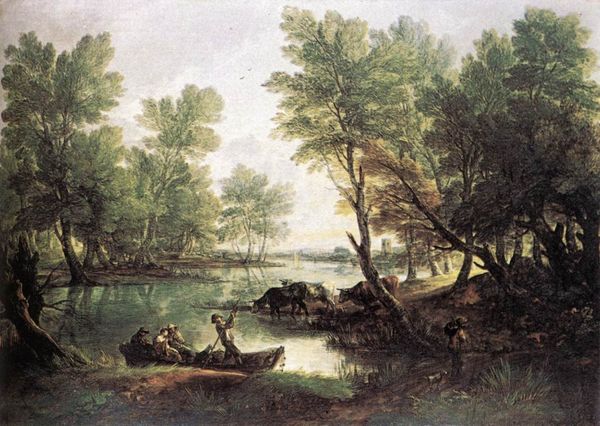
painting, plein-air, oil-paint
#
tree
#
sky
#
painting
#
plein-air
#
oil-paint
#
landscape
#
river
#
oil painting
#
romanticism
#
water
#
genre-painting
#
academic-art
Copyright: Public domain
Curator: What a serene scene! I'm immediately struck by the way the light filters through those trees. Editor: This is John Constable's "Stratford Mill", painted around 1820. He was, of course, deeply invested in capturing the English countryside. Curator: The composition is expertly handled. Notice how the artist uses the curve of the river to guide our eye through the canvas, culminating in the vastness of the sky. Semiotically speaking, this pathway is how our engagement with nature is guided, shaped and made. Editor: Beyond the aesthetics, I'm interested in what the mill represents. These weren't just picturesque settings; they were central to the economic and social fabric of rural communities. The process of milling grain to make flour for bread was a laborious one, critical for daily survival. Look at the textures - that heavy, worked timber compared to the almost weightless treatment of clouds. Curator: Precisely. It's that juxtaposition that gives the painting its power. The density of the lower portion of the picture plane anchors the eye, providing a counterpoint to the atmospheric sky. And the reflections on the water add such wonderful visual complexity. I love the interplay between the horizontals of the river bank and the verticals of the trees. Editor: But look closely. Constable wasn't afraid to depict the reality of that labor – the workers are rendered in a state of hard work. The materiality of the painting emphasizes a key shift. This painting captures not merely an idealized view, but alludes to changing agricultural techniques. Consider the human intervention on the landscape, a testament to agricultural enterprise. Curator: You're right, of course. It is much more than just an idyll. The painting succeeds because of its formal tension – between the rough, earthly activity and the almost spiritual beauty of the sky. The diagonals intersecting as paths into the scene evoke a sense of perspective we should value. Editor: Absolutely, and thinking about his plein-air painting practice – going directly into the landscape, and using tube oils to capture what was around him, is vital. We see an interaction between painting, making and doing. I think the legacy and impact of this approach cannot be overstated. Curator: Indeed. Ultimately, "Stratford Mill" stands as a brilliant testament to Constable’s talent in harmonizing form, subject, and emotional resonance. Editor: And by considering what went into constructing the scene – literally and figuratively, by assessing those historical impacts. We also obtain new understanding.
Comments
No comments
Be the first to comment and join the conversation on the ultimate creative platform.
